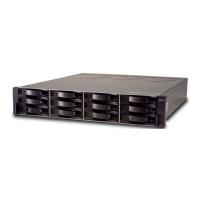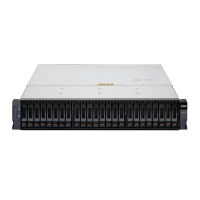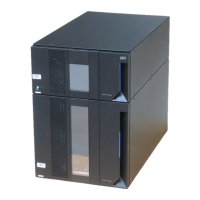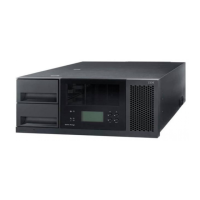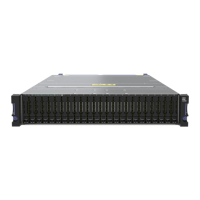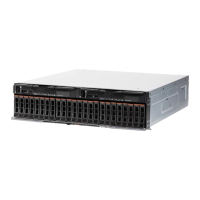Table 8. Temperature and humidity requirements for storage subsystem in a NEBS/ETSI
compliant environment (continued)
Condition Parameter Requirement
Notes:
1. In a NEBS/ETSI compliant environment, conditions are measured at a location 1.5 m (59
in.) above the floor and 400 mm (15.8 in.) in front of the equipment.
2. Short-term refers to a period of not more than 96 consecutive hours and a total of not
more than 15 days in one year. (This refers to a total of 360 hours in any given year, but
no more than 15 occurrences during that one-year period.)
Altitude
Table 9 lists the acceptable altitudes for operating, storing, and shipping the
DS5020.
Table 9. DS5020 altitude ranges
Environment Altitude
Operating 30.5 m (100 ft.) below sea level to 3000 m
(9842 ft.) above sea level
Storage 30.5 m (100 ft.) below sea level to 3000 m
(9842 ft.) above sea level
Transit 30.5 m (100 ft.) below sea level to 12,000 m
(40,000 ft.) above sea level
Airflow and heat dissipation
Figure 10 shows the intended airflow for the DS5020. Allow at least 30 inches in
front of the storage subsystem and at least 24 inches behind the storage subsystem
for service clearance, proper ventilation, and heat dissipation.
Table 10 on page 25 lists the KVA, watts, and Btu calculations. These values
assume the power supplies have a 73 percent efficiency and a power factor of 0.99.
These tabulated power and heat dissipation values are typical for the storage
subsystem. Maximum configuration units are typically operated at higher data rates,
have larger random access memory (RAM) capacities, or have different host
interface boards.
Figure 10. DS5020 airflow
24 IBM System Storage DS5020 Storage Subsystem: Installation, User’s, and Maintenance Guide
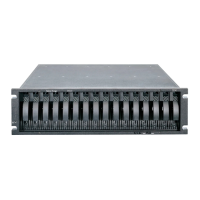
